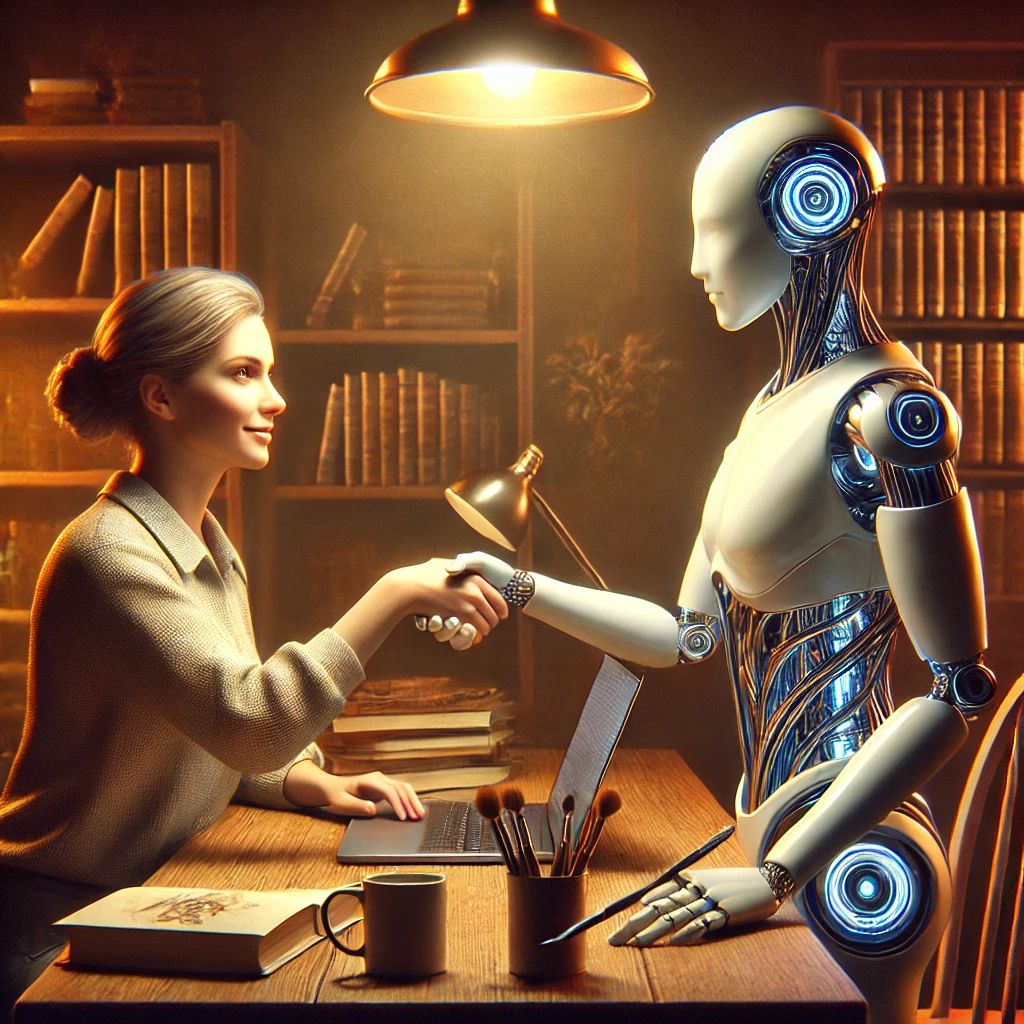What everyone need to know in 2025

The U.S. Copyright Office’s latest report (Jan 2025) has confirmed a crucial point: AI-generated content is not copyrightable unless a human makes a substantial, original contribution.
For businesses and marketers using AI in content, this raises important questions:
- Who owns AI-generated logos, visuals, and brand messaging?
- How can businesses ensure their AI-assisted content is protected?
- Could this impact personal branding efforts on LinkedIn and other platforms?
Additionally, Europe is taking a different approach, introducing new AI regulations that impact copyright rules. Let’s break down the key insights from both sides of the Atlantic and their impact on branding, marketing, and content creation.
1. The U.S. Copyright Rule: AI can’t replace human authorship
The human authorship requirement is central to U.S. copyright law. The report states:
✔️ Works that combine AI and human input may be eligible for protection—but only for the human-created parts.
❌ Fully AI-generated works cannot be copyrighted, even with detailed prompts.
📌 Implication for Brands & Content Creators in the U.S.:
- AI can help you brainstorm, structure, or refine ideas, but it won’t grant you copyright on the output unless you significantly modify or contribute to it.
- Businesses relying on AI-generated logos or brand assets may find themselves in a legal grey area.
2. The EU’s AI Act: A more regulated approach
Unlike the U.S., Europe has introduced new AI regulations that impact copyright law.
The EU AI Act, expected to take effect in 2025, introduces strict transparency and accountability rules for AI-generated content. While the AI Act does not create new copyright laws, it reinforces existing EU regulations that require:
- Human authorship for copyright protection (aligned with U.S. rules).
- Transparency obligations for AI-generated content, meaning companies must disclose when AI is used to create text, images, or videos.
- Regulations on AI training datasets, ensuring AI developers respect intellectual property laws when training models on copyrighted content.
Additionally, the EU Copyright Directive (Article 3 & 4) provides exceptions for text and data mining (TDM), allowing AI companies to train models on copyrighted material unless the rights holder explicitly opts out.
📌 Implication for Brands & Content Creators in the EU:
- If you use AI for marketing or branding, you may need to disclose AI’s role in content creation.
- TDM exceptions make AI training more flexible in Europe, but companies still need to respect copyright laws.
- Legal compliance is more complex in the EU than in the U.S., especially for businesses operating internationally.
3. Prompts alone don’t grant copyright (Applies to both the U.S. & EU)
The U.S. Copyright Office and European regulators agree on a key principle:
✔️ Simple prompts (e.g., “Generate an image of a futuristic city”) don’t make the user an author.
✔️ Even complex prompts may not be enough because AI still makes independent creative decisions.
📌 Implication for Businesses & Content Creators:
- If your branding assets are AI-generated, competitors might reuse them without legal consequences.
- Businesses should consider modifying AI-generated content to add a human creative touch to strengthen copyright claims.
4. Policy considerations: comparing the U.S. & EU approaches
The U.S. and EU differ in their policy perspectives:
| Aspect | United States (U.S.) | European Union (EU) |
|---|---|---|
| Human Authorship Rule | ✅ Required | ✅ Required |
| Copyright for AI-Generated Works | ❌ Not allowed | ❌ Not allowed |
| Transparency Rules | ❌ No strict requirements | ✅ AI-generated content must be labeled |
| Overall Legal Approach | Case-by-case analysis | More regulated, AI Act sets clear rules |
📌 What This Means for Global Businesses:
If you’re operating in both the U.S. and the EU, be mindful of disclosure rules and differences in AI-generated content regulations. The U.S. has a more flexible system, while the EU requires businesses to be more transparent about AI’s role in content creation.
5. What should you do next?
For businesses and marketers using AI in content creation and branding:
✅ Use AI as a creative tool but ensure substantial human input for copyright protection.
✅ Modify AI-generated assets (logos, social media visuals, etc.) to include human originality.
✅ Stay informed about legal changes, especially in international markets.
Read the full Copyright Office report here.
💬 Do you think AI-generated works should be copyrightable? Share your thoughts in the comments!
Note: I use AI tools to generate text and images.
Leave a Reply